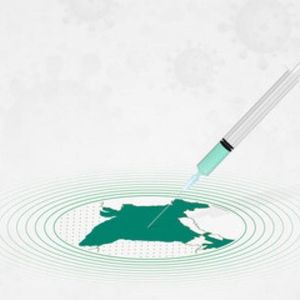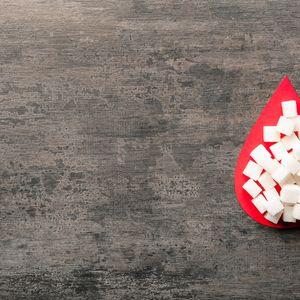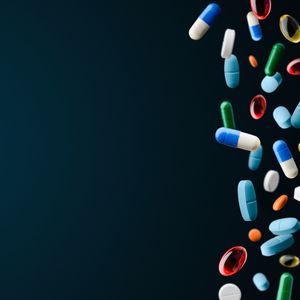

Our Review Process
Our articles undergo extensive medical review by board-certified practitioners to confirm that all factual inferences with respect to medical conditions, symptoms, treatments, and protocols are legitimate, canonical, and adhere to current guidelines and the latest discoveries. Read more.
Our Editorial Team
Shifa Fatima, MSc.
Author
Dr. Apoorva T, MHM.
MEDICAL ADVISOR
Basic Terms About Diabetes
Start getting into the subject of Diabetes and Blood Sugar, and you may feel like you're speaking another language!. When you have diabetes, understanding your numbers as well as options for self-management will help you live a healthier life. Here we tell you some basic terms associated with diabetes that you should know.
Table of Contents
1. Blood Glucose or Blood Sugar :
Glucose is the main source of energy that food is turned into that’s found in the blood. It is created by the body whenever you eat food. Blood glucose levels are the amount of glucose that someone has in their blood at any given time. It is measured in milligrams per deciliter (mg/dL). Normal blood glucose level for adults, without diabetes, who haven’t eaten for at least eight hours (fasting) is less than 100 mg/dL. A normal blood glucose level for adults, without diabetes, two hours after eating is less than 140 mg/dL.
2. Glucose Meter or Glucometer :
As the name suggests, a glucose meter is a simple device used to determine the approximate concentration of glucose in the blood. This small device has a screen attached to it that shows the blood sugar level digitally. All you need to do is to insert a test strip in the device, prick your finger with a lancet and put a drop of blood on the test strip. The device will then calculate the levels in milligrams per deciliter (mg/dL). Keeping a log of your results on a blood glucose chart will give you an excellent picture of your body’s response to your actions and care plan.
3. Hyperglycemia :
Hyperglycemia (high blood glucose) is a condition where there is too much sugar in the blood. High blood sugar can have causes that aren't due to underlying disease. Examples include recent consumption of a high carbohydrate meal or medication side effects. It also occurs when the body does not produce or use enough insulin, which is a hormone that absorbs glucose into cells for use as energy. High blood sugar is a leading indicator of diabetes.

4. Hypoglycemia :
Hypoglycemia, also known as low blood sugar, is a fall in blood sugar to levels below normal. The most common cause of hypoglycemia is medications used to treat diabetes such as insulin and sulfonylureas. Symptoms include feeling excessive hunger, sweating, shakiness, or weakness may also be present Symptoms typically come on quickly.
5. Somogyi Effect :
Commonly known as the "rebound effect", the Somogyi effect is a condition in which your blood sugar gets very high after it has been really low. The phenomenon usually occurs when you wake up after sleeping for long. In case it occurs frequently, you might need to keep a check on your blood glucose level in midnights also. As recommended by experts, the Somogyi effect can be prevented by having a light snack in the evening or by adjusting your insulin.
6. Pancreas :
Just below and behind your stomach, there's a small gland about the size of your hand. This gland is termed the pancreas. The gland is responsible for producing insulin. It has a group of cells known as islets. These islets produce hormones and various digestive juices that help you break down the food you eat. Its beta cells produce insulin, and its alpha cells produce glucagon.
7. Insulin :
Insulin is a hormone that helps the body use glucose. Insulin allows glucose to enter the cells that need it, especially the muscles. Without insulin, glucose can’t get to where it needs to go. People with type 1 diabetes don’t have this hormone; people with type 2 diabetes either don’t have it or their bodies aren’t able to use it.
8. Insulin Pump :
An insulin pump is a device you might need to carry next to your body. It comprises a thin tube connected to a needle that goes beneath your skin. The device keeps giving a trickle of insulin all day long to maintain a healthy blood sugar level. It can be easily programmed as per the timings and the insulin level.
9. Bolus Insulin :
Extra insulin that a diabetes patient takes when he or she needs to bring his/her glucose down is termed as bolus insulin. Bolus insulin can be taken through injections or insulin pumps.
10. Glucagon :
As mentioned above, glucagon is another hormone secreted by the pancreas. It works the opposite of insulin. It is responsible for raising blood sugar levels.
11. Insulin Resistance :
It is a condition in which your cells don't respond as well as it should to insulin. It’s an early sign of type 2 diabetes and is usually associated with prediabetes, type 2 diabetes, obesity, high cholesterol and high blood pressure.
12. Prediabetes :
Prediabetes is a condition in which the blood glucose is higher than the normal range but not high enough to be labelled as diabetes. This condition is often experienced as a warning sign before developing type 2 diabetes.
13. Gestational Diabetes :
Gestational is another type of diabetes that develops in pregnant women. The disease usually gets cured after giving birth. Experts say that if you have been diagnosed with gestational diabetes, you are more likely to develop type 2 diabetes in future.
14. Brittle Diabetes :
It is another type of diabetes in which your sugar levels change rapidly from high to low. When suffering from this condition, it is hard to control your blood sugar levels. Also know about sugar in urine test.
15. Diabetes Insipidus :
Diabetes Insipidus is a kind of diabetes results from medical problems in your kidneys or pituitary gland. In this kind of diabetes, you might have normal sugar levels, but you may feel very weak and highly thirsty all the time.
16. Diabetes Mellitus :
Often referred to as diabetes, "diabetes mellitus" is a medical condition in which your body faces trouble using up the glucose for energy. It can be classified as -
- Type 1 : A condition when your body destroys the beta cells that produce insulin
- Type 2 : A condition when your body can't use the insulin properly
FAQs
1. What are the 3 P's of Diabetes?
The Three P's of diabetes are –
Polydipsia – This is caused by increased blood sugar levels. In this case, due to high blood glucose levels, the kidneys produce more urine to remove extra glucose from the body thereby resulting in excessive thirst and persistent dry mouth.
Polyuria – In this case, a person tends to pass more urine than normal. As the blood glucose levels are high, the body makes an effort to remove excess glucose through urination. People with this condition produce more than 3 litres of urine in a day.
Polyphagia – In this case, a person feels hungry as the body cannot convert the glucose to energy due to insulin resistance or low insulin levels. Even after consuming food, the hunger is not satisfied and eating more can contribute to high blood glucose levels.
Also read about sugar in urine
2. How many Types of Diabetes are there?
There are basically 4 main types of diabetes.
1. Prediabetes – In this condition, the blood sugar levels are elevated beyond the normal level but not as high as to be labelled as diabetes. It can be a precursor to type 2 diabetes.
2. Type 1 diabetes – This type of diabetes is also known as insulin-dependent diabetes. In this type, the insulin-producing cells in the pancreas are destroyed by the immune system. So, people diagnosed with type 1 diabetes need to take insulin every day.
3. Type 2 diabetes – In this type of diabetes, the body either doesn’t make enough insulin or the blood cells don’t respond to the insulin produced. Type 2 diabetes is also called adult-onset diabetes and insulin-resistant diabetes.
4. Gestational diabetes – This type of diabetes develops in some women during their pregnancy. It generally goes away after pregnancy. However, persons with gestational diabetes are at a higher risk of developing type 2 diabetes later on in their lives.
3. How to get tested for diabetes?
Diabetes can be tested with the help of a device called the Glucometer. This is a digital device that has a screen which shows the blood sugar levels. In this device, a test strip is inserted with a drop of blood on it. Then the device calculates the glucose levels in milligrams per deciliter. Know more about glucometer. Also know about fasting sugar normal range.
References
- https://www.webmd.com/diabetes/ss/slideshow-blood-sugar-terms
Disclaimer
This website's content is provided only for educational reasons and is not meant to be a replacement for professional medical advice. Due to individual differences, the reader should contact their physician to decide whether the material is applicable to their case.
More by Shifa Fathima

अर्जुनरिष्ट: फायदे, खुराक, नुकसान | पढ़ें | Sugar.fit

मधुमेह के लिए मधुनाशिनी वटी: उपयोग, लाभ, खुराक और दुष्प्रभाव|

मधुमेह को नियंत्रित करें भारतीय आहार से





